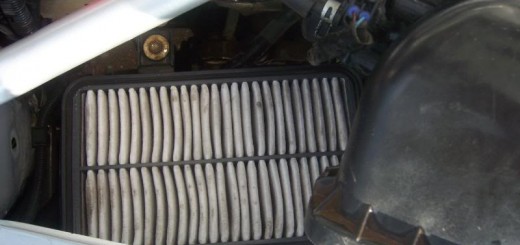This is a mod I’ve been wanting to do for a long time. The various threads that discuss the matter indicate that no damage results from removing the engine lid drip tray, and that better cooling results. First, I had to consider my location and driving style. It is very hot here in Florida, so I want that cooling improvement. But it rains heavily here, too. Since this isn’t my daily driver, I can avoid driving in the rain for the most part, so the decision to mesh is an easy one. And the screen will repel leaves, acorns, and… who am I trying to kid here – I’m going for the bling!
Now to the question of how to mesh. From the examples I’ve seen, there are several ways to do it. And I had to source the screen. Found some very high quality grill mesh online, chromed, that ought to hold up to the job. On the other hand, it was cut for a grill, so I couldn’t bolt the mesh on with the stock bolts and fasteners, as others have done.
First, I’d have to remove the drip tray.

Here are the fasteners, shown in the approximate position you encounter them. A 9mm socket takes care of the four metal bolts. An upholstery-removal tool handled the two outer soundproofing material poppets, and the two center poppets are of the “pull the middle part, then extract” type. Note that I had to drill out the two left bolts. The thread pitch is extremely fine and MrT had obviously stripped them on factory install. Be prepared to perform the same surgery.

Eventually, you’ll get this guy off. It’s rather heavy, and trying to clean the upper side of it has always frustrated me. Won’t miss it one bit.

Problem: How to fix two strips of mesh to the underside of the lid. I spent a few minutes studying the area, and made a discovery.

Notice that there’s a gap between the side of the vents and a second sheet of steel. Depending on how deep this gap is all around, I could, theoretically, fit the screens into this area and press to fit. Turns out you can do this.

Grab yourself some thin, stiff cardboard and cut a large rectangle. Fit it into the aforementioned gap and note the position of concealed rubber grommets behind the gap. Trim the template until the cardboard snaps into place, solidly and securely, with perfect fitment. Then, use the template to trim the mesh. The goal is to ensure that the screen runs behind the vents parallel to the apertures – you don’t want the screen to be at an angle so check, measure, place, check, measure, place, over and over until you know for sure that the screen will be square when snapped into place.

Interestingly, you’ll need to make a second template, because the gaps that you fit the mesh into are not identical on the right and left sides. Each side has a unique pattern of rubber grommets. The second problem is creating the illusion of a single, contiguous piece screen beneath the vents. As you can see in this photo, I fit the second template, then traced a few vent outlines from above the engine lid. By checking the first installed mesh on the left, I was able to determine how the interstices of the mesh would have to look on the right side. Again, triple-check your work to ensure that the mesh installs parallel to the vent openings. Check again.

Install complete. I used a pair of needle-nose pliers to make fine adjustments to the cut ends of the mesh and got an OEM-quality result. Start to finish, it took about 5 hours to get to this stage, including the hassle of drilling out the stripped bolts.

Installed, from behind.

From the right.

From the left. The illusion of a single piece of screen has been accomplished. Less weight on the car, more cooling, and protection from foreign-object intrusion into the engine bay. This is an appearance mod that thinks its a performance mod.

PITA factor: Two frosties. By the way, the mesh ran me $9.50, plus $7.50 shipping. That’s under $20, which is something to be considered when you think about the mrs-passion price of 50 euro, before shipping. If you do this mod, source your mesh very carefully. This isn’t something you want to buy from Home Depot or Lowe’s unless you are absolutely sure that you are protected from rust. Finish the install with 3M double-sided tape to secure the soundproofing material.
Tools required: 9mm socket, narrow-blade screwdriver, upholstery removal tool, 9mm wrench, drill, several narrow bits, scissors, 3M double-sided tape, tin snips, thin laminated cardboard for templates, pen, needle-nose pliers in straight and bent types, high-quality chromed aluminum mesh, cold beverage of choice.
This documentation in no way replaces the Toyota MR2 Repair Manuals. The purpose of this content is only to provide supplementary information to fellow MR2 enthusiasts. Midship Runabout and its contributing authors will not be held responsible for any injury or damages that may occur as the result of practicing any of the methods or procedures described within this website. Article and photo submissions are property of the contributing author.

